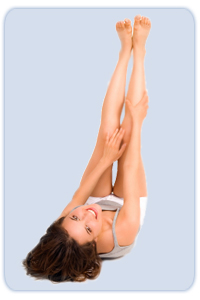 Varicose Veins - Treatments
Varicose Veins - Treatments
Varicose veins are permanent dilations of the veins, usually concentrated in the lower limbs.
Causes
The varicose vein is a chronic venous disease. When the wall of the vein is reached, the expansion disrupts the unidirectional flow of blood to the heart, valves and can no longer function antireflux. The vein is so overloaded with blood. In addition to its highly unattractive side, the varix is also a threat to physical health.
In addition to age and sex, and if the inheritance would not play a role, several other factors can contribute to varicose veins. Obesity, lack of exercise, work standing all day, wearing tight clothing, exposure to heat and heavy loads RHL are examples.
Symptoms
Symptoms typically include the feeling of heavy legs, bloating, tingling, pain and cramps. The varicose veins can be visible or palpable and can be identified by swelling, dermatitis, eczema, a cellulitis, ulcers healed or open, or a sinuous white atrophy. The diagnosis must be made clinically and confirmed by Doppler. If left untreated, varicose veins can cause complications such as phlebitis, bleeding and ulcers.
Information and advice
Although some gestures can be installed so as not to encourage the appearance of varicose veins, keep in mind that this is a chronic disease as functional and aesthetic. It is wise to consult a specialist who will take appropriate action, depending on the particular case.
However, if one is at risk, it is recommended to avoid a sedentary lifestyle, to avoid taking or lose weight quickly, avoid exposure to heat sources that dilate the veins (hot baths, sauna, sun, etc.) and, in the case of women, to avoid the contraceptive pill. The approach of menstruation is a time for the appearance of varicose veins. Pregnant women are also highly subject to the formation of varicose veins.
Treatments
Symptomatic treatments
Symptomatic treatments are many, but do not solve the underlying problem:
Stockings
Elastic compression stockings are working to treat varicose veins as painful as to prevent the appearance of new varicose veins. They act as a "second layer" of muscles that compress the veins and prevent blood pooling in the veins. These low and prevent varicose ulcers and varicose ulcers, but once you stop wearing them, varicose veins are re-inflate. To carry them in comfort, it is better to put them in the morning before getting up. By threading them lying down, one avoids a significant amount of blood does not go down and stagnate, at least in part, in the legs. Ideally, they should be worn all day. Long recognized as unsightly and troublesome to put on the stockings are now available in a variety of colors and styles to please all the closets. They can be found in both pharmacy and a boutique specializing in various forces of restraint.
Anti-inflammatory
Anti-inflammatory used to relieve in cases of superficial phlebitis.
Drugs veinotonic
Drugs veinotonic
s, also called "phlebotonic," these drugs are used to strengthen and relax the vein walls. They would thus relieve some symptoms. However, their use does not unanimous.
Sclerotherapy
Sclerotherapy requires no anesthesia or recovery time. This treatment is ideal for beginners varicose veins and spider veins. The doctor injects an irritant solution into the small superficial veins burst, causing the closure of these veins. While the blood is thus forced to fall back to other non-varicose veins, the "bad" veins become useless subside gradually and usually leave no trace. A new form of sclerotherapy, microsclérothérapie, is particularly suitable for treating spider veins. If sclerotherapy may require several treatments over the same vein, the results are generally good. However, it does not prevent the formation of new varicose veins in the surrounding, so the results are not always permanent.
Curative treatments are also numerous:
Veinotomie outpatientDuring this procedure, we extract the small veins of patients with micro-incisions using a special hook.
Laser treatments
A variety of laser treatments is offered, on the surface of the skin and inside of the vein, the so-called endovenous laser. A laser fiber is inserted into the diseased vein. The laser destroys the vein by forcing it to close in on itself.
CHIVA (Surgery of the venous hemodynamics in ambulatory)
Still under consideration, this transaction reduces the venous pressure without removing the veins. With the superficial veins are ligated, forcing the blood to pass through the deep veins. Once ligated, they are longer, deflate themselves and become less visible and less painful. This procedure is for people who have a slight impact of the veins.
Endoscopic vein surgery
This procedure is used in relatively mild cases where serious leg ulcers appeared. It is performed using a tiny video camera that is inserted into the leg through a small incision to see and close the veins.
Stripping
Also called "stripping", the conventional process used for severe cases and is to extract the veins of each of the affected leg, through small incisions. Depending on age and severity of the problem, treatment may require hospitalization of one to five days followed by a recovery ranging from 3 to 21 days.

